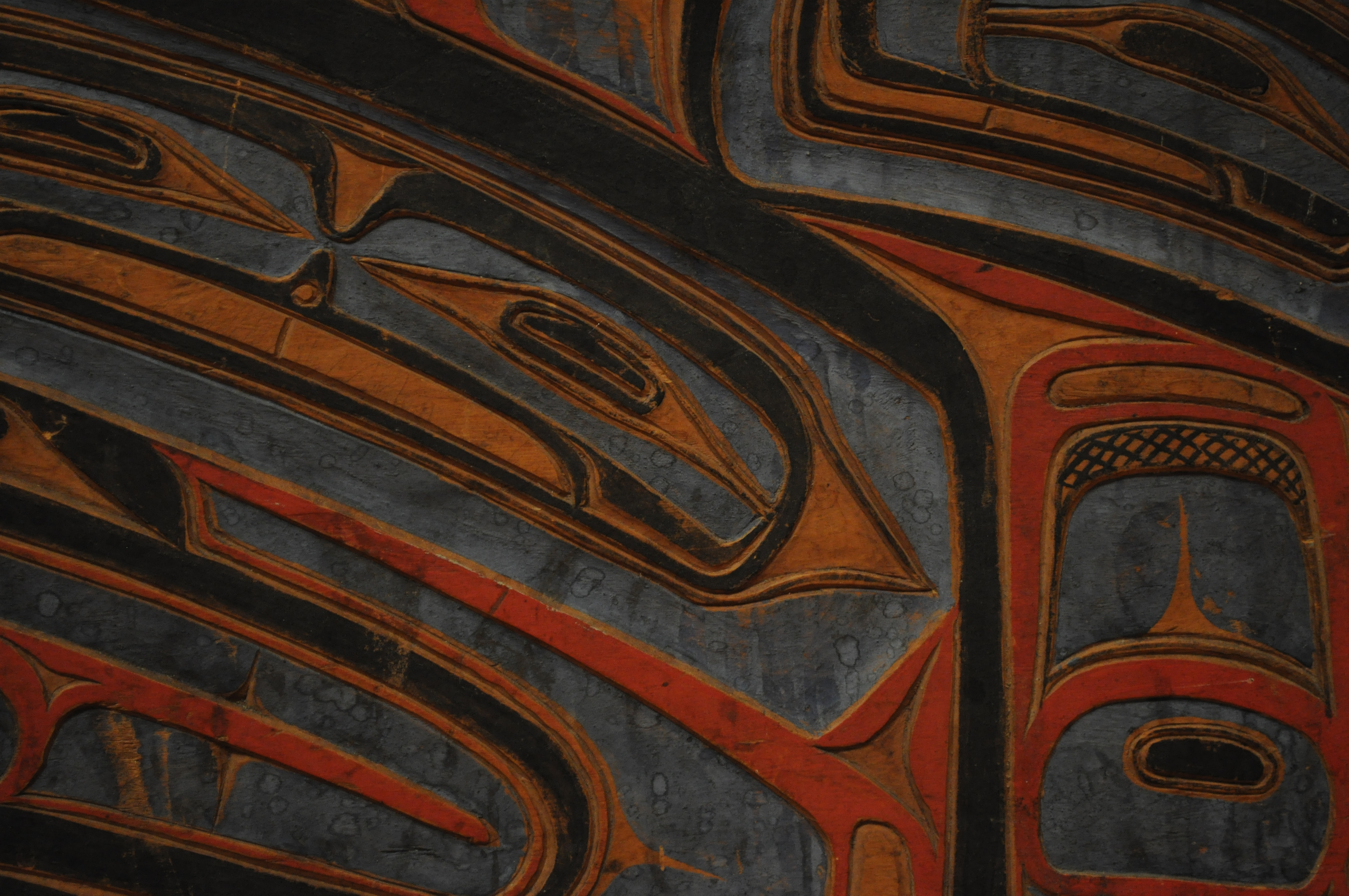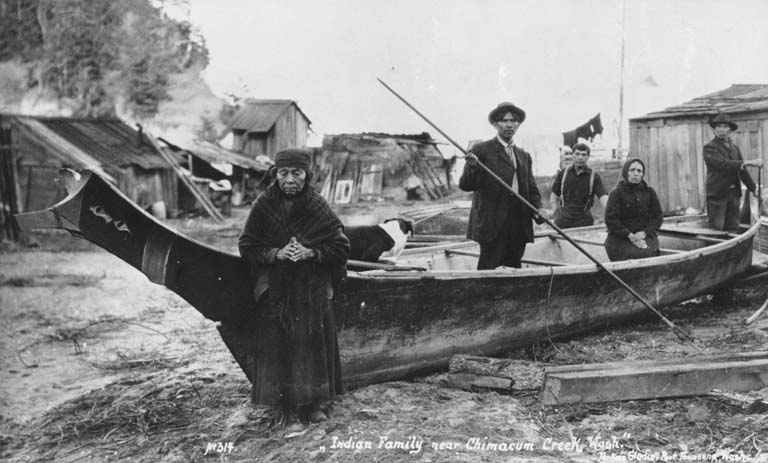|
Cultural Keystone Species
A cultural keystone species is one which is of exceptional significance to a particular culture or a people. Such species can be identified by their prevalence in language, cultural practices (e.g. ceremonies), traditions, diet, medicines, material items, and histories of a community. These species influence social systems and culture and are a key feature of a community's identity. The concept was first proposed by Gary Nabhan and John Carr in 1994 and later described by Sergio Cristancho and Joanne Vining in 2000 and by ethnobotanist Ann Garibaldi and ethnobiologist Nancy Turner in 2004. It is a "metaphorical parallel" to the ecological keystone species concept, and may be useful for biodiversity conservation and ecological restoration. Definitions The exact definition of cultural keystone species remains under debate and is considered to be more abstract than the related ecological concept. Garibaldi and Turner emphasize that the cultural keystone species concept is not an ... [...More Info...] [...Related Items...] OR: [Wikipedia] [Google] [Baidu] |
Ethnobotanist
Ethnobotany is the study of a region's plants and their practical uses through the traditional knowledge of a local culture and people. An ethnobotanist thus strives to document the local customs involving the practical uses of local flora for many aspects of life, such as plants as medicines, foods, intoxicants and clothing. Richard Evans Schultes, often referred to as the "father of ethnobotany", explained the discipline in this way: Ethnobotany simply means ... investigating plants used by societies in various parts of the world. Since the time of Schultes, the field of ethnobotany has grown from simply acquiring ethnobotanical knowledge to that of applying it to a modern society, primarily in the form of pharmaceuticals. Intellectual property rights and benefit-sharing arrangements are important issues in ethnobotany. History The idea of ethnobotany was first proposed by the early 20th century botanist John William Harshberger. While Harshberger did perform ethnobotanical ... [...More Info...] [...Related Items...] OR: [Wikipedia] [Google] [Baidu] |
Ecological Processes
Ecosystem ecology is the integrated study of living ( biotic) and non-living (abiotic) components of ecosystems and their interactions within an ecosystem framework. This science examines how ecosystems work and relates this to their components such as chemicals, bedrock, soil, plants, and animals. Ecosystem ecology examines physical and biological structures and examines how these ecosystem characteristics interact with each other. Ultimately, this helps us understand how to maintain high quality water and economically viable commodity production. A major focus of ecosystem ecology is on functional processes, ecological mechanisms that maintain the structure and services produced by ecosystems. These include primary productivity (production of biomass), decomposition, and trophic interactions. Studies of ecosystem function have greatly improved human understanding of sustainable production of forage, fiber, fuel, and provision of water. Functional processes are mediated by regi ... [...More Info...] [...Related Items...] OR: [Wikipedia] [Google] [Baidu] |
Katzie
Katzie First Nation ( hur, q̓ic̓əy̓) is an Indigenous band located in the Lower Fraser Valley in British Columbia, Canada. They are part of the Sto:lo Coast Salish group of peoples, historically referred to by European settlers as Fraser River Indians or Fraser Salish. Their band government is the Katzie First Nation, which does not belong to either of the two Sto:lo tribal councils. Language həṅq̓əmín̓əḿ, the downriver dialect of Halkomelem, is still spoken by Katzie peoples, despite colonization attempts (including the Canadian Residential School System). Halkomelem is one of the Coast Salish or Salishan languages. Lands and governance Traditional Katzie territory includes the entire Pitt watershed, including the Alouette watershed, the Fraser River and lands adjacent down to Point Roberts, and lands between the Fraser and Boundary Bay. There are approximately 592 members of the Katzie First Nation (their Indian Act-mandated government), and 302 are currently ... [...More Info...] [...Related Items...] OR: [Wikipedia] [Google] [Baidu] |
Sagittaria Latifolia
''Sagittaria latifolia'' is a plant found in shallow wetlands and is sometimes known as broadleaf arrowhead, duck-potato, Indian potato, katniss, or wapato. This plant produces edible tubers that have traditionally been extensively used by Native Americans. Description ''Sagittaria latifolia'' is a variably sized perennial, ranging from in length and growing in colonies that can cover large areas of ground. The roots are white and thin, with the green and white mother plant producing white tubers ranging from long and deep, covered with a purplish skin. The plant produces rosettes of leaves and an inflorescence on a long rigid scape. The leaves are extremely variable, from in length and thin to wedge-shaped like those of '' S. cuneata''. Spongy and solid, the leaves have parallel venation meeting in the middle and the extremities. The inflorescence is a raceme about above water and composed of white flowers whorled by threes, blooming from July to September. The ... [...More Info...] [...Related Items...] OR: [Wikipedia] [Google] [Baidu] |
Porphyra
''Porphyra'' is a genus of coldwater seaweeds that grow in cold, shallow seawater. More specifically, it belongs to red algae phylum of laver species (from which comes laverbread), comprising approximately 70 species.Brodie, J.A. and Irvine, L.M. 2003. ''Seaweeds of the British Isles.'' Volume 1 Part 3b. The Natural History Museum, London. It grows in the intertidal zone, typically between the upper intertidal zone and the splash zone in cold waters of temperate oceans. In East Asia, it is used to produce the sea vegetable products ''nori'' (in Japan) and '' gim'' (in Korea). There are considered to be 60 to 70 species of ''Porphyra'' worldwide Kain, J.M. 1991. Cultivation of attached seaweeds. in Guiry, M.D. and Blunden, G. 1992. ''Seaweed Resources in Europe: Uses and Potential.'' John Wiley and Sons, Chichester and seven around Britain and Ireland where it has been traditionally used to produce edible sea vegetables on the Irish Sea coast.Hardy, F.G. and Guiry, M.D. 2006. ' ... [...More Info...] [...Related Items...] OR: [Wikipedia] [Google] [Baidu] |
Heiltsuk
The Heiltsuk or Haíɫzaqv , sometimes historically referred to as ''Bella Bella'', are an Indigenous people of the Central Coast region in British Columbia, centred on the island community of Bella Bella. The government of the Heiltsuk people is the Heiltsuk Nation, though the term is also used to describe the community. Its largest community is Bella Bella. They should not be confused with the Salish-speaking Nuxalk (Nuxalkmc) peoples ("People of Bella Coola Valley (Nuxalk)"), who were formerly usually called Bella Coola, an Anglicization of the Heiltsuk term Bíbḷxvḷá (singular: Bḷ́xvḷá, meaning: "stranger"). History Ancestors of the Heiltsuk (Haíɫzaqv) have been in the Central Coast region of British Columbia since at least 7190 BCE. The Heiltsuk (Haíɫzaqv) are the main descendants of Haíɫzaqvḷa(Heiltsuk)-speaking people and identify as being from one or more of five tribal groups: W̓úyalitx̌v (Wuyalitxv) (Seaward Tribe or Seaward Division; outsid ... [...More Info...] [...Related Items...] OR: [Wikipedia] [Google] [Baidu] |
Haida People
Haida (, hai, X̱aayda, , , ) are an indigenous group who have traditionally occupied , an archipelago just off the coast of British Columbia, Canada, for at least 12,500 years. The Haida are known for their craftsmanship, trading skills, and seamanship. They are thought to have frequently carried out raids and to have practised slavery. The Haida have been compared to the Vikings by Diamond Jenness, an early anthropologist at the Canadian Museum of Civilization. In Haida Gwaii, the Haida government consists of a matrix of national and regional hereditary, legislative, and executive bodies including the Hereditary Chiefs Council, the Council of the Haida Nation (CHN), Old Massett Village Council, Skidegate Band Council, and the Secretariat of the Haida Nation. The Kaigani Haida live north of the Canadian and US border which cuts through Dixon Entrance south of Prince of Wales Island ( tli, Taan) in Southeast Alaska, United States; Haida from K'iis Gwaii in the Duu Guusd regi ... [...More Info...] [...Related Items...] OR: [Wikipedia] [Google] [Baidu] |
Tsimshian
The Tsimshian (; tsi, Ts’msyan or Tsm'syen) are an Indigenous peoples of the Pacific Northwest Coast, Indigenous people of the Pacific Northwest Coast. Their communities are mostly in coastal British Columbia in Terrace, British Columbia, Terrace and Prince Rupert, British Columbia, Prince Rupert, and Metlakatla, Alaska on Annette Island, the only reservation in Alaska. The Tsimshian estimate there are 45,000 Tsimshian people and approximately 10,000 members are federally registered in eight First Nations communities (including the ''Kitselas,'' ''Kitsumkalum,'' ''Gitxaala,'' ''Gitga'at'' at Hartley Bay, and ''Kitasoo'' at Klemtu) ''Lax Kw'Alaams,'' and ''Metlakatla, BC''. The latter two communities resulted in the colonial intersections of early settlers and consist of Tsimshian people belonging to the 'nine tribes.' The Tsimshian are one of the largest First Nations peoples in northwest British Columbia. Some Tsimshian migrated to the Annette Islands in Alaska, and today ap ... [...More Info...] [...Related Items...] OR: [Wikipedia] [Google] [Baidu] |
Western Red-cedar
''Thuja plicata'' is an evergreen coniferous tree in the cypress family Cupressaceae, native to western North America. Its common name is western redcedar (western red cedar in the UK), and it is also called Pacific redcedar, giant arborvitae, western arborvitae, just cedar, giant cedar, or shinglewood. It is not a true cedar of the genus ''Cedrus''. Description ''Thuja plicata'' is a large to very large tree, ranging up to tall and in trunk diameter. Trees growing in the open may have a crown that reaches the ground, whereas trees densely spaced together will exhibit a crown only at the top, where light can reach the leaves. The trunk swells at the base and has shallow roots. The bark is thin, gray-brown and fissured into vertical bands. As the tree ages, the top is damaged by wind and replaced by inferior branches. The species is long-lived; some trees can live well over a thousand years, with the oldest verified aged 1,460. The foliage forms flat sprays with scale-lik ... [...More Info...] [...Related Items...] OR: [Wikipedia] [Google] [Baidu] |
Kitcisakik
Kitcisakik or Grand-Lac Victoria Indian Settlement is an Indian settlement of the Kitcisakik Anicinape Community located in the Abitibi-Témiscamingue region of Quebec Quebec ( ; )According to the Canadian government, ''Québec'' (with the acute accent) is the official name in Canadian French and ''Quebec'' (without the accent) is the province's official name in Canadian English is one of the thirtee ..., Canada. It is geographically located within the territory of La Vallée-de-l'Or Regional County Municipality. Its population was 257 in the 2021 Canadian Census. Prior to October 23, 1999, it was known as Grand-Lac-Victoria. On June 21, 2021, it was designated as a historic site by the Government of Quebec. References External links Communauté anicinape de Kitcisakik(Indigenous and Northern Affairs Canada) Indian settlements in Quebec Communities in Abitibi-Témiscamingue Heritage sites in Quebec {{AbitibiTémiscamingue-geo-stub ... [...More Info...] [...Related Items...] OR: [Wikipedia] [Google] [Baidu] |


.jpg)
